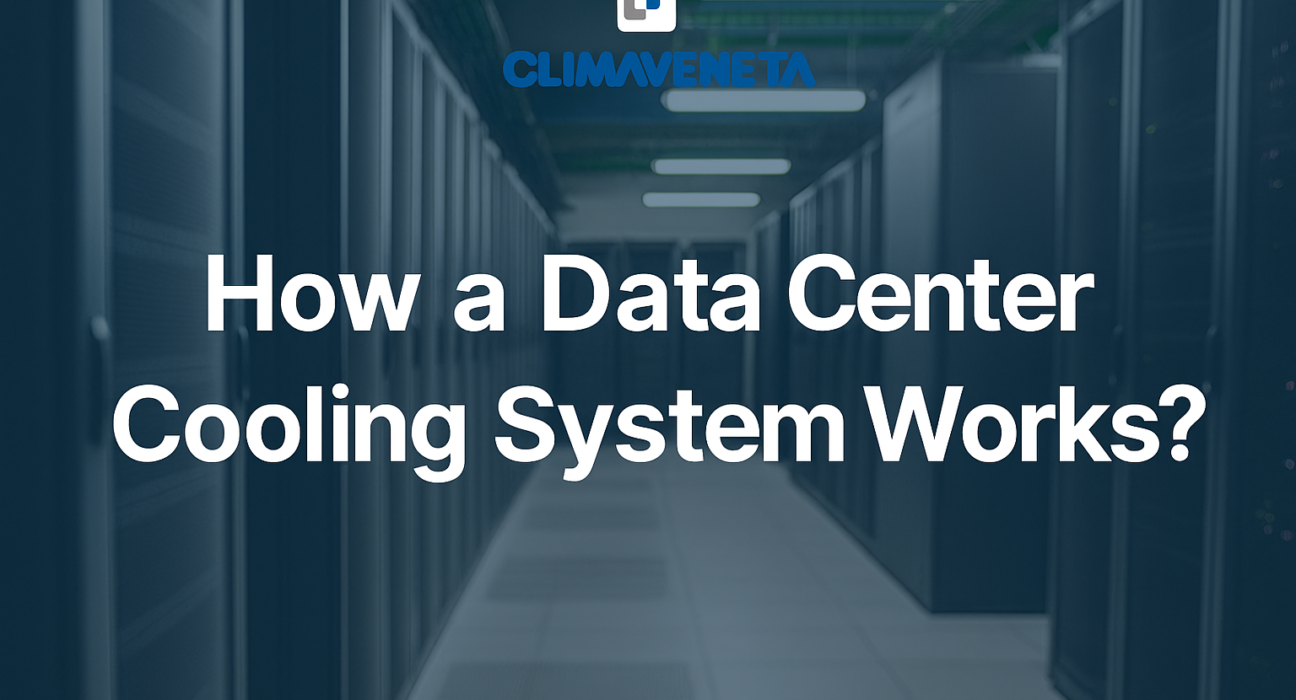Modern data centers are the unseen heroes of our connected world. Whether you’re streaming your favorite series, backing up files to the cloud, or relying on real-time AI analytics, your data flows through complex server farms working around the clock. But behind this seamless digital experience lies an invisible yet vital component: the Data Center Cooling System.
With India and other emerging markets witnessing a dramatic surge in data consumption and cloud adoption, data centers are becoming increasingly dense and power-hungry. The heat generated by this IT equipment is intense and continuous. Without the right Data Center Cooling System, even a brief lapse in temperature control can result in overheating, data corruption, or critical system failure.
Understanding how these cooling systems operate is more than technical know-how—it’s a strategic priority for infrastructure architects, IT operations teams, and sustainability-focused organizations.
Let’s explore how a Data Center Cooling System functions and the role that Air Cooled Chillers play in maintaining thermal stability.
Why Is Cooling Critical in Data Centers?
In data centers, temperature control isn’t optional—it’s essential. Servers, GPUs, switches, and storage arrays run 24/7, producing large amounts of heat in confined environments. Rack densities have increased, power loads have surged, and the margin for thermal error has shrunk.
If not managed properly, this heat buildup can:
- Reduce equipment lifespan and performance
- Cause unexpected shutdowns or hardware failures
- Compromise service-level agreements (SLAs)
- Increase power consumption and operating costs
A modern Data Center Cooling System ensures that heat is effectively removed, and the optimal operating conditions—typically between 18°C and 27°C—are consistently maintained.
Core Components of a Data Center Cooling System
To deliver consistent thermal performance, a Data Center Cooling System integrates multiple technologies and design elements that work together seamlessly:
1. CRAC/CRAH Units (Computer Room Air Conditioning / Air Handling)
These units are the first line of cooling defense. CRAC units use refrigerant-based direct expansion systems to cool air, while CRAH units leverage chilled water—supplied by chillers—to regulate air temperature within the server room.
2. Airflow Management Strategies
Techniques like hot aisle/cold aisle containment, underfloor cooling, and raised floor architecture ensure cold air reaches the server inlets while isolating and extracting hot air from the exhaust. Without this, even the best chillers can underperform.
3. Chillers
This is where Air Cooled Chillers become central. As one of the most reliable and scalable cooling technologies, they support CRAH systems and are ideal for a wide range of climates, especially in regions with water scarcity or space constraints.
How Air Cooled Chillers Work in Data Centers?
Air Cooled Chillers are vital components of an energy-efficient Data Center Cooling System. These chillers operate without cooling towers and rely solely on ambient air to expel heat, making them ideal for standalone deployments, retrofitted buildings, or urban data centers.
Here’s how the process unfolds:
1. Start of the Cooling Cycle
The cycle starts when warm water or coolant—heated by server exhaust—is sent from CRAH units back to the Air Cooled Chiller.
2. Heat Exchange via Evaporator
Inside the chiller, the heated fluid passes through an evaporator coil containing refrigerant. The refrigerant absorbs this heat and evaporates, leaving behind cooled water which returns to the data center to continue the cooling cycle.
3. Compression Phase
The now vaporized refrigerant is compressed to increase its pressure and temperature—a key step that prepares it for efficient heat expulsion.
4. Heat Rejection via Air-Cooled Condenser
This high-pressure vapor enters the air-cooled condenser, typically located outdoors or on rooftops. Here, powerful fans force ambient air across condenser coils to cool and condense the refrigerant back into a liquid state, rejecting the absorbed heat into the atmosphere.
5. Pressure Drop via Expansion Valve
The liquid refrigerant then passes through an expansion valve, where it is depressurized and cooled before re-entering the evaporator. This closed-loop cycle ensures a continuous, stable cooling process.
Advantages of Using Air Cooled Chillers in Data Centers
- No Need for Cooling Towers
Air Cooled Chillers simplify infrastructure by eliminating the need for water-based cooling towers, which require additional space, plumbing, and maintenance. - Low Maintenance and Quick Installation
With fewer moving parts and no water treatment systems, these chillers are easier and faster to install and maintain. - Highly Suitable for Urban & Water-Scarce Areas
Air Cooled Chillers are perfect for metro locations or regions with limited water availability—making them ideal for markets like India, where both real estate and water are precious resources.
Energy Efficiency and Intelligent Cooling
Cooling accounts for nearly 30% to 40% of a data center’s total energy usage. To address this, modern Air Cooled Chillers come equipped with:
- Variable-speed compressors and EC fans to dynamically adjust cooling load
- IoT-based sensors for real-time data monitoring
- AI-powered controls to predict thermal loads and optimize power use
- Free cooling capabilities that leverage ambient air when outside conditions allow
These innovations reduce operational costs (OPEX), minimize environmental impact, and support corporate sustainability goals—especially in high-density data environments.
Wrap Up
As data centers scale to meet the demands of cloud computing, IoT, and AI, the importance of a well-engineered Data Center Cooling System cannot be overstated. Efficient cooling not only ensures uptime and hardware longevity but also plays a critical role in reducing energy bills and carbon footprint.
Air Cooled Chillers have emerged as the cooling workhorse of modern IT infrastructure. Their modularity, ease of deployment, and compatibility with smart controls make them an ideal choice for new builds as well as legacy system upgrades.
Investing in an advanced Data Center Cooling System, especially one built around Air Cooled Chillers, is no longer a luxury—it’s a necessity for future-ready, sustainable operations.
Wondering Which Data Center Cooling System Is Right for You?
Climaveneta India offers a complete range of air-cooled chillers, screw chillers, and advanced cooling technologies designed to keep your digital infrastructure running cool and reliably.
Whether you’re scaling a hyperscale data center or upgrading an existing facility, our experts can help you find the perfect fit.
Connect with Climaveneta India to explore the right solution for your data center.





